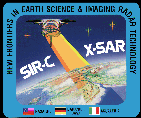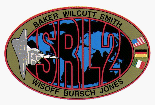Space Imaging Radar
|
|
For over 3 years I was the SIR-C Mission Operations computer systems administrator / manager. SIR-C is an L-band and C-band radar pannel that, along with the X-band radar pannel built by our European counterparts, made up the Space Radar Laboratory (SRL). SRL flew on the space shuttle twice in 1994. SIR-C stands for Space Imaging Radar, part C. SIR-A flew on the space shuttle during STS-2 in November, 1981, and SIR-B flew on STS-41G (during that time when they were numbering space shuttle missions strangely) as part of OSTA-3. I was responsible for all hardware in the Payload Operations Command Center, which is the room across the hall from the Mission Control room at the Johnson Space Center you see on TV. Our ground system consisted of a VAX/VMS cluster, included multiple DSSI hosts, with 10 Gbytes of disks (back when a 426 MB disk was a big thing) and 20 VAXstations. The primary purpose of the Mission Operations System was real time targeting of the radar pannels. We had to compare the list of the targets we wanted to image with the ground tracks of the space shuttle orbitor, select the targets, set the radar imaging parameters (similar to focus and f-stop for a camera), and send them up to the payload. We also had to manage the on-board (shuttle) data storage tapes for the high rate data from the radar pannels. We used Ingres for the relational database management system. Also in the POCC we had a few HP and Sun Unix machines for radar performance analysis. Shuttle Radar Topography Mapper(SRTM)The third flight of the SIR-C radar pannel was on STS-99 and was called SRTM for Shuttle Radar Topography Mission. For this mission, a 60-meter boom and receive-only antena was added to the payload. With this boom extending from the payload bay of the shuttle, we can collect single pass interferometry data. A radar signal is generated from the main antena in the cargo bay, bounces off the earth, and then is received back at both the main antena and the smaller antena at the end of the 60 meter boom. With each antena having a slightly different perspective, a three dimensional image can be created. During an 11 day mission, a topographic map of 80 percent of the Earth's land surface can be produced. If you have a pair of red/blue 3-d glasses, look here. Here is where you can find lots of images from this mission. Other SIR-C related stuff
|
|


